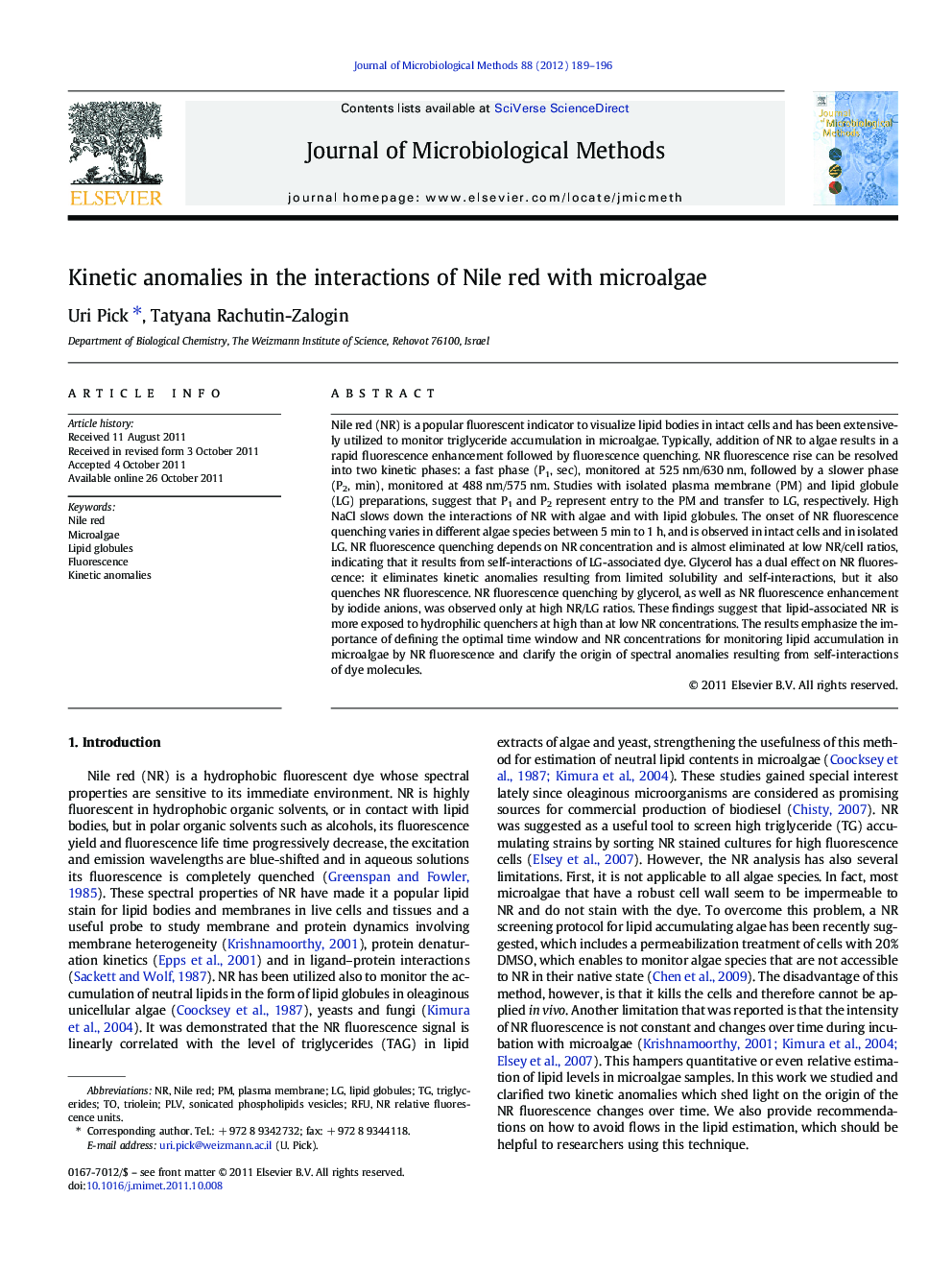| Article ID | Journal | Published Year | Pages | File Type |
|---|---|---|---|---|
| 2090317 | Journal of Microbiological Methods | 2012 | 8 Pages |
Nile red (NR) is a popular fluorescent indicator to visualize lipid bodies in intact cells and has been extensively utilized to monitor triglyceride accumulation in microalgae. Typically, addition of NR to algae results in a rapid fluorescence enhancement followed by fluorescence quenching. NR fluorescence rise can be resolved into two kinetic phases: a fast phase (P1, sec), monitored at 525 nm/630 nm, followed by a slower phase (P2, min), monitored at 488 nm/575 nm. Studies with isolated plasma membrane (PM) and lipid globule (LG) preparations, suggest that P1 and P2 represent entry to the PM and transfer to LG, respectively. High NaCl slows down the interactions of NR with algae and with lipid globules. The onset of NR fluorescence quenching varies in different algae species between 5 min to 1 h, and is observed in intact cells and in isolated LG. NR fluorescence quenching depends on NR concentration and is almost eliminated at low NR/cell ratios, indicating that it results from self-interactions of LG-associated dye. Glycerol has a dual effect on NR fluorescence: it eliminates kinetic anomalies resulting from limited solubility and self-interactions, but it also quenches NR fluorescence. NR fluorescence quenching by glycerol, as well as NR fluorescence enhancement by iodide anions, was observed only at high NR/LG ratios. These findings suggest that lipid-associated NR is more exposed to hydrophilic quenchers at high than at low NR concentrations. The results emphasize the importance of defining the optimal time window and NR concentrations for monitoring lipid accumulation in microalgae by NR fluorescence and clarify the origin of spectral anomalies resulting from self-interactions of dye molecules.
Graphical abstractFigure optionsDownload full-size imageDownload as PowerPoint slideHighlights► NR transfer from membranes to lipid bodies displays biphasic fluorescence enhancement. ► NR fluorescence quenching results from aggregation of lipid-associated dye. ► Optimizing triglyceride accumulation in microalgae with Nile red.
